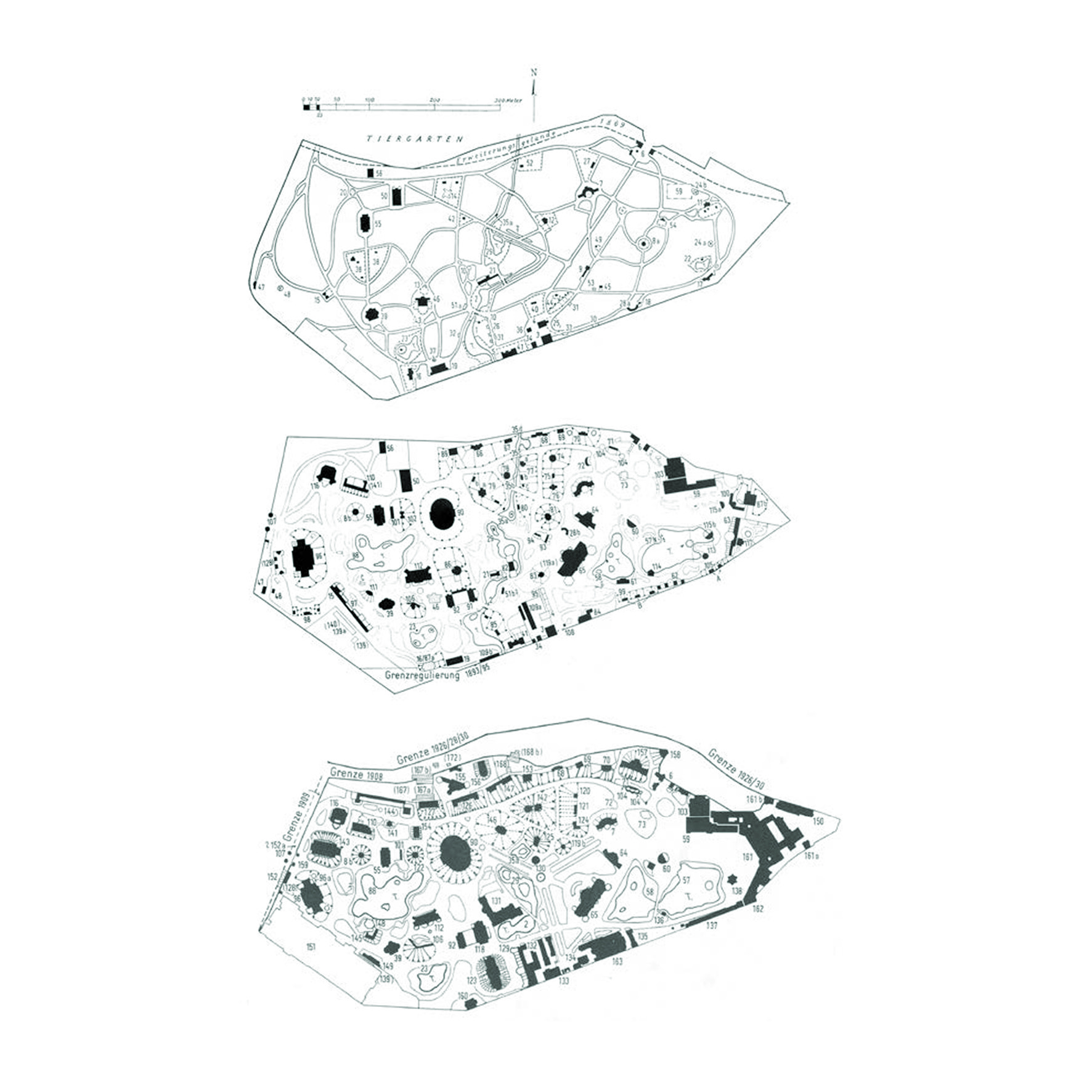Zoological Landscape
“
The progressive development of the ground over the mid to late 1800s in Zoologischer Garten Berlin(Berlin zoo) from 1844-1869 to 1869-1894 and 1896-1919.”
The Berlin Zoological Garden was established in 1844 by Professor Martin Lichtenstien, with the approval of King Freidrich Wilhelm IV. The zoo was influenced by the success of the Gardens of the London Zoological Society at Regent’s Park in 1824.1
In 1869, Heinrich Bodinus, who had formerly been the director of the successful Cologne Zoo, was hired as the new director at Berlin Zoological Garden and immediately transformed the zoo from a ‘random exhibition of animals’ into a systematic zoo, aiming to have significant scientific establishments either for teaching or educating zoology or collections of living animals where their natural properties and habits could be studied. Bodinus also introduced the ‘exotic style’ to the zoo inspired by the Egyptian Temple at the Antwerp Zoo and other exotic buildings during his traveling trip to other European zoos. Unlike other zoos of its era, the Berlin Zoological Garden was opened to the public from day one, eschewing the conventional preconception that the zoo was only for the elites in high society.2
The creation of the German Empire in 1871 prompted a wave of nationalist sentiment that was closely tied to the country’s global position.3 With the popularity in number of visitors and a collection of large-scale buildings that were featured in the zoological landscape as much as the animals - alongside the introduction of the ‘exotic style’ embraced by the Berlin Zoo during a period of unprecedented German colonial expansion - the zoo became a cultural embodiment for the public fascination with colonial ventures and the position of Germany on the global stareflecting and ge. The zoo became emblematic of the country’s international image, embodying a message of dominance and strength.

Image source:
Heinz Georg and Ursula Klos. “Der Berliner Zoo im Spiegel seiner Bauten 1841-1989.” Berlin: Zoologischer Garten Berlin, 1990. 355.
References
1. Rachel Couper. “Animal Showcase : An architectural history of early zoological gardens.” Byera Hadley Travelling Scholarships Journal Series, 2015.
2. Rachel Couper. “Animal Showcase : An architectural history of early zoological gardens.” Byera Hadley Travelling Scholarships Journal Series, 2015. 3. Rachel Couper. “Animal Showcase : An architectural history of early zoological gardens.” Byera Hadley Travelling Scholarships Journal Series, 2015.
1. Rachel Couper. “Animal Showcase : An architectural history of early zoological gardens.” Byera Hadley Travelling Scholarships Journal Series, 2015.
2. Rachel Couper. “Animal Showcase : An architectural history of early zoological gardens.” Byera Hadley Travelling Scholarships Journal Series, 2015. 3. Rachel Couper. “Animal Showcase : An architectural history of early zoological gardens.” Byera Hadley Travelling Scholarships Journal Series, 2015.